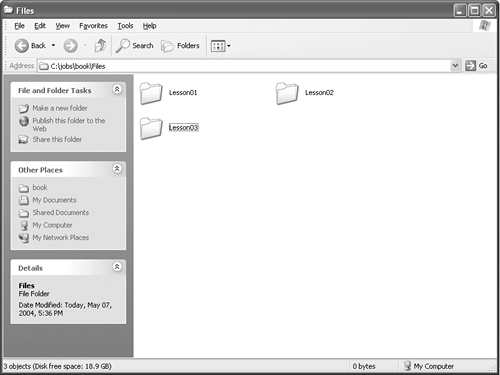Elements and Format
| Each lesson in this book begins by describing which new features of Director you will learn, and by outlining the major learning points within the lesson. Objectives and the approximate time you will need to complete the lesson are also listed, as well as the files on the CD-ROM you will need. Lessons are divided into a series of short steps, accompanied by an explanation of the importance of the step. As you progress through the projects and lessons, new skills you acquire will build upon those learned in previous lessons. Code line numbers: Lines of code begin with numbers to identify the line. These numbers are not included in the actual code and are only for referencing. Line Continuation Indicator: Character appearing at the end of a line of code, indicating that the next line is a continuation of the current line. The line of code has been broken into two or more lines for the purpose of printing and no actual break in the line of code should be inserted. Tips: Alternative ways to perform tasks and suggestions to consider when applying the skills you are learning. The Tip icon indicates tips. Notes: Additional background information to expand your knowledge, as well as advanced techniques you can explore in order to further develop your skills. The Note icon indicates notes. Boldface terms: Text that you are to enter appears in bold. Italic terms: New vocabulary that is introduced and emphasized in each lesson. Menu commands and keyboard shortcuts: Menu commands are shown with angle brackets between the menu names and commands: Menu > Command > Subcommand. Keyboard shortcuts are shown with a plus sign between the names of keys to indicate that you should press the keys simultaneously; for example, Ctrl+Q means that you should press the Control and Q keys at the same time. Appendixes: This book includes two appendixes. Appendix A, "DOM Reference," gives you a quick and handy reference to Director's Object Model. Appendix B, "Tips and Tricks," lists some guidelines regarding using JavaScript in your movies, as well as a few samples and useful tips. CD-ROM: The files you will need to complete the projects for each lesson are located in the DMX2004_projects folder on the enclosed CD, which can be found in the back of the book. Inside the projects folder are subfolders titled with the name of each lessonLesson01, for examplethat contain the subfolders and files necessary to perform the tasks in that lesson. Which subfolders are included will depend on the projects in the lesson. The folder structure of the lessons you will be working with is shown here:  Web Site: This book has an accompanying Web site, at www.peachpit.com/mx/director04, which has an additional lesson for enhancing the game projects. In the lesson, you will use Director, PHP and mySQL to create a table for storing high game scores for players. The lesson covers using net Lingo with object-oriented techniques, posting to and querying a server-side database as well as adding security measures for both the games and the database file. |
EAN: 2147483647
Pages: 166